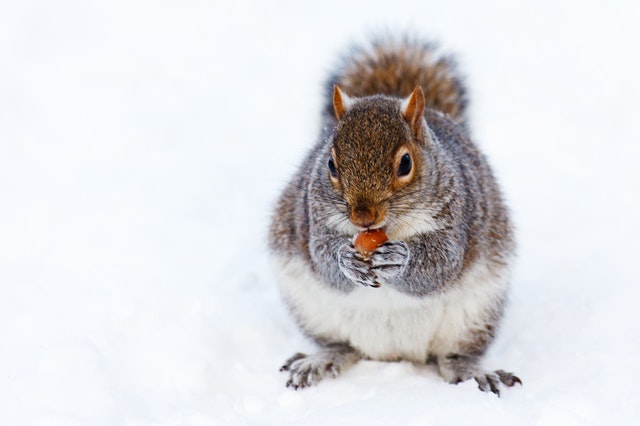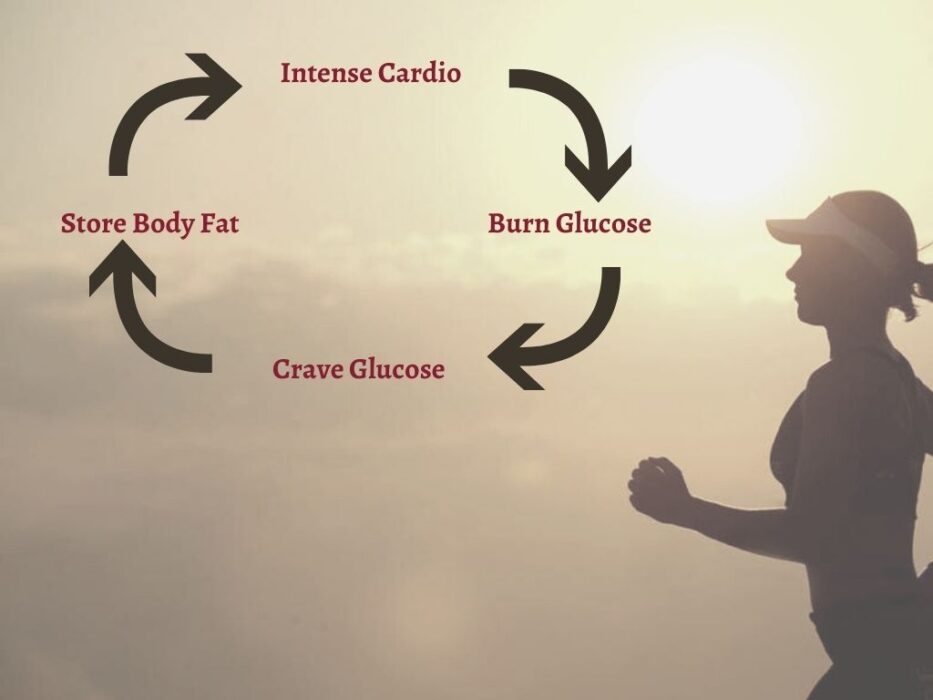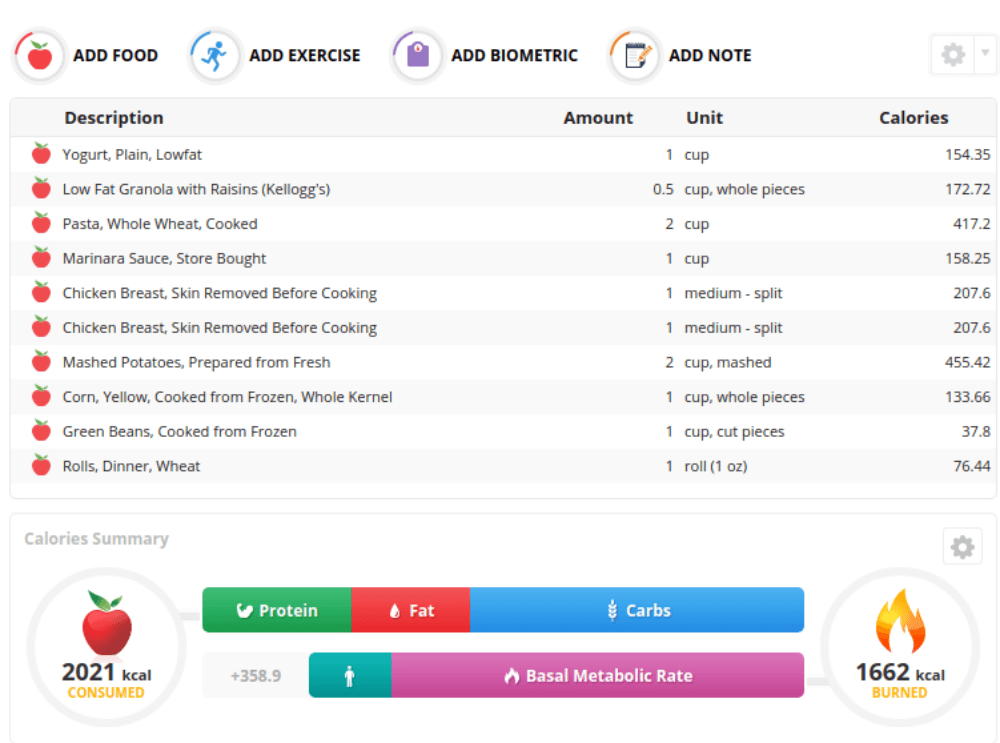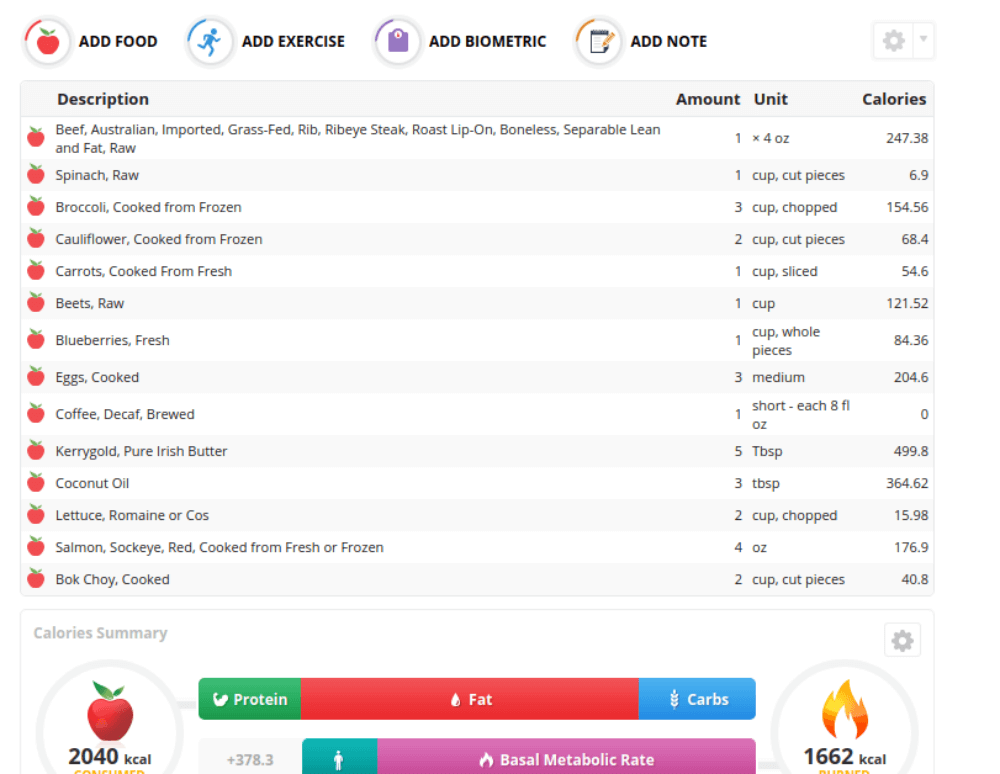I earn a small commission via affilate links at no extra cost to you.
For decades we’ve all heard the weight loss tip that we need to move more and eat less if we want to lose weight. An entire industry is built around these two concepts of weight loss workouts and counting calories for weight loss. When it comes to reaching your weight loss goals counting calories for weight loss isn’t a winning plan. Weight loss workouts that work aren’t what you likely think they are. Think about it, how many times have you counted calories and exercised vigorously only to end up right where you started? You can’t exercise at maximum intensity every day for the rest of your life to make up for a bad diet. Yes, those people on The Biggest Loser lost weight but how many of them regained the weight? How many people do you know who have dieted by reducing their calories and exercising more, only to see all of the weight, plus more, return the second they stop what they’re doing?
It’s a great business model. You see results while you’re following their weight loss tips but you get tired of the monthly fee and/or you finally get burnt out and you stop doing it. Then you gain all of the weight back and you likely go right back to the people who “helped” you before, or you try something with a different name that’s really still the same with more weight loss workouts. Lather, rinse, repeat and after each diet, you’ve gained the weight back plus a little more. Do that 5 times and that’s 5 plus “a little mores”.
The definition of insanity is repeating the same thing and expecting a different result. There are countless calorie calculators and diets with different names, but 99% of them rely exclusively on calories for weight loss. It isn’t how many calories you eat; it’s how many calories you store. When it comes to weight loss workouts, the wrong types of exercise will make you gain weight and I speak from personal experience.
In my 20’s I belonged to a gym where I’d go to a one-hour step-aerobics/kickboxing class and then I’d lift weights afterward. During that year I gained 30 pounds. At that time I worked in a laboratory conducting experiments so I would say that I was on my feet for at least half of a workday; it wasn’t a sedentary issue. When my clothes began to get too tight I decided to stop working out because I didn’t join the gym to buy new clothes. I returned to my normal size without a workout routine.
Burning Calories For Weight Loss Is Not Effective Long Term
On the surface, it seems that the weight loss tip of calories in vs calories out should make sense. I eat calories and I burn calories with a weight loss workout but there is much more to this equation.
Your body is a chemistry experiment, not a bank.
Chronic, vigorous exercise decreases metabolic rate, increases appetite, and makes you more likely to store fat after exercise. Is that what you were going for when you decided you were going to exercise hard every day? Even worse, the harder you exercise the more intense these effects become because they are the product of your hormonal response to exercise.
If you’ve been eating the Standard American Diet (SAD) your body is most likely dependent on glucose for a constant source of energy. When you work out every day at a high intensity (anaerobically), glucose is burned at a high rate during your workout. The body perceives a drop in blood glucose as a fight or flight emergency so it will trigger cravings for carbohydrates after your calorie chasing weight loss workout. Glucose is stored in the liver and muscle tissue and when those stores are full the excess glucose gets converted to triglycerides and stored as body fat. After exercise Lipoprotein Lipase (LPL) levels increase, signaling cells to pull nutrients into cells for storage.
Dr. Jason Fung (see his video below) gave the best analogy I’ve heard to explain this phenomenon: the refrigerator and the freezer. We buy groceries. We fill the refrigerator. When the refrigerator is full we go to the garage to begin filling the freezer with the extras. In this scenario, the groceries are glucose and the freezer is the area for fat storage. Since there is no way to accurately tell, at home, how much glucose you burned (how many groceries you need), when you reload with carbohydrates (groceries), hormonal signaling will cause you to overshoot the available storage capacity in the liver and muscles. The excess will get stored as body fat (freezer).
The weight loss tip you likely haven’t heard is that weight loss is hormonal. A load of carbohydrates consumed will create an insulin response. Insulin packs the carbohydrates away into your cells (refrigerator) which causes blood sugar to drop causing the craving for more carbohydrates to return. But you’ve just filled the refrigerator so the next round of carbohydrates has to go to the freezer…ie stored as body fat.
Patterns of chronic, excessive exercise have also been shown to destroy white blood cells, reduce immune system function, trigger chronic inflammation, and increase cortisol which consequently reduces muscle-building testosterone. Testosterone not only builds muscle it also elevates your mood, improves your brain’s performance, and it acts as an anti-aging hormone for both men and women. This is one of the many reasons why weight loss isn’t always a good thing. There’s a difference between weight loss and fat loss. It’s also why weight loss workouts that are long, and at a high heart rate, end up wrecking your health.
Weight Loss Workouts Are All About Your Heart Rate
As mentioned above, when you exercise anaerobically (high heart rate chasing calories for weight loss) you will primarily burn glucose. However, when you exercise aerobically you’ll burn body fat. What’s the difference? Aerobic means “with oxygen” and anaerobic is “without oxygen”. Fat requires the presence of oxygen for it to be burned for energy during exercise. When you workout at high intensity your body goes into a bit of an oxygen deficit. Your respiratory system can’t keep up with the demand which is why you breathe harder and when oxygen isn’t abundantly available the body has to rely on glucose to fuel itself.
When you dial in your heart rate for a fat-burning workout and consistently eat a well-formulated paleo diet your body will get better at fat adaptation. Fat adaptation is when your body remembers how to access stored body fat for fuel. When you’re not fat-adapted your body relies on glucose as a primary fuel source. When you hit your daily weight loss workout in the anaerobic zone, chasing calories for weight loss, you are only burning glucose. You refuel with carbohydrates and afterward the scenario above with the refrigerator and the freezer plays out. When you’re fat-adapted your body can easily use stored body fat and ketones for fuel so you’re not at the mercy of the carbohydrate cycle.
The Best Weight Loss Tip:
It’s not what you burn during an hour-long workout.
What do you burn the other 23 hours of the day?
When people ask and I suggest that they work out less in order to lose weight they naturally think I’m insane. They don’t say it but you can pick up a lot from silence. I don’t take it personally because I know that conventional wisdom has followed the calories in vs calories out theory for decades. It’s simply not true.
Weight Loss Tip: It’s Not How Many Calories You Eat; It’s How Many Calories You Store
The ingredient most avoided when your counting calories for weight loss is fat. Fat has 9 calories per gram whereas carbohydrates and protein have 3 calories per gram. Here’s the thing though: Fat doesn’t make you fat. Low-calorie carbohydrates will cause weight gain. By restricting the macronutrient with the most calories that don’t make you fat, in favor of carbs that can make you gain weight, proves that all calories are not created equally? (Blog post: Meal Planning To Lose Weight)
If I told you to eat 100 grams of carbohydrates from bread versus 100 grams of fat from coconut oil what would happen? (I used cronometer.com to come up with these numbers.)
1/2 cup of coconut oil is 105 grams of fat and 972 calories
9 slices of white bread are 105 grams of carbohydrates and 598 calories
12.5 slices of whole wheat bread are 105 grams of carbohydrates and 725 calories
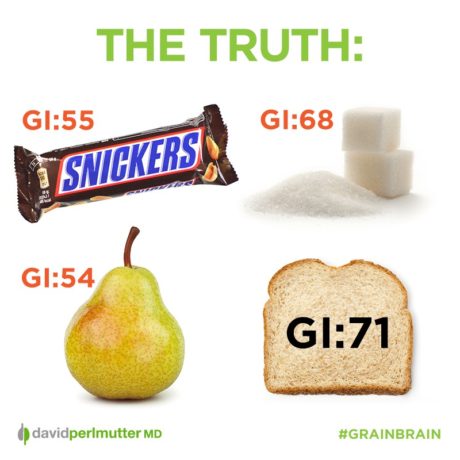
When you eat the coconut oil you might have a challenge finishing it because saturated fat makes you feel full. Even if you do finish the coconut oil your body won’t produce an insulin response because there is no glucose spike. There is no glucose in coconut oil yet you just consumed 972 calories.
Conversely, if you ate 9-12 slices of bread you’d likely find that you’re hungry again not long after you’ve eaten it. When you consume the bread your body doesn’t care if it’s table sugar or bread, glucose is glucose and the body will release insulin to store it away. If your liver and muscles are already full of glucose, the glucose from the bread will get stored as fat.
Eating the SAD diet we tend to eat everything wrapped in, on, or with a side of bread, and everything is sweetened with sugar. When insulin is present it keeps fat locked inside fat cells. This is why the calories of coconut oil vs bread are not equal. The coconut oil will fill you up and keep your insulin levels low. Low insulin allows your body to access stored body fat for fuel. It’s that weight loss tip that gets left out of many conversations.
Let’s Compare A Healthy Day of Eating
A person wakes up and has a low-fat yogurt parfait topped with low-fat granola. For lunch, they have whole wheat pasta with marinara and chicken. For dinner, they have roasted chicken with mashed potatoes, corn, green beans, and a dinner roll.
What does that look like?
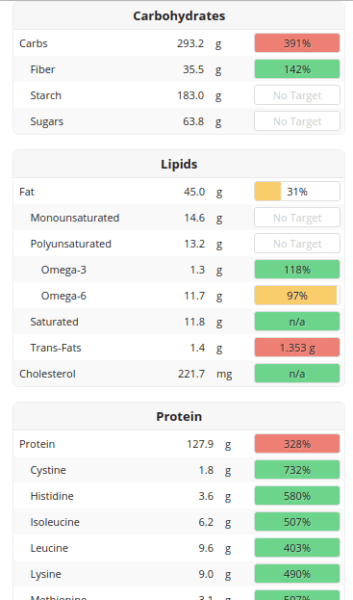
This is what a day of low-fat eating often looks like. Let’s face it pasta is cheap and easy to make. Yogurt, granola, and whole wheat are all considered healthy but a person who eats this in a day has eaten 293 grams of carbohydrates. To maintain your current body weight carb intake should only be 100-150 grams of carbs per day. This person ate twice that!
Looking at the protein. Chicken is something I advise people to go lightly on. I know it’s the go-to protein because it’s low-fat and it’s versatile but because it’s low-fat it doesn’t fill you up the same way a fatty grass-fed steak would.
A person who weighs 150 lbs and has 30% body fat needs 74 grams of protein a day. If the person eating this was the same size they would have eaten far more protein than they needed.
When I tried to create a paleo food day of 2021 calories it was a ton of food. I added 4 oz of steak, 4 oz of salmon, and the 9 cups of vegetables recommended by Terry Wahls. Even though I’d already added 4 tbsp of butter and 2 tbsp of coconut oil I still didn’t reach 2021.
To reach 2021 calories on a paleo diet you’d have to purposely add saturated fat to everything as I typically do. For my paleo 2040 (as close as I could get to 2021) calorie day, I was shy on calories sticking to vegetables and meat. I added 5 Tbsp of Kerrygold butter and 3 Tbsp of coconut oil (864 calories) to make up the difference because I’d already added 12 cups of vegetables. That is a ton of food! Have you ever tried to eat 12 cups of vegetables in a day? It’s difficult to do. The macros for the Primal food day below are 117.3 grams of carbohydrates, 141.8 grams of fat, and 106.5 grams of protein.
Plus, most people find that when they adopt a real food eating strategy they’re no longer hungry all day long. Real food fills you up. It’s nutrient dense so you’ll likely feel more vibrant. Most coaches I know say that they sleep better too. When your body begins ramping up its fat adaptation it makes intermittent fasting easy and it helps slow the aging process.
What further makes weight loss efforts challenging is the countless “quick fixes” and processed foods marketed for weight loss. As of this writing in 2017 weight loss foods tend to avoid saturated fat. When saturated fat is not present the only things left are carbohydrates, protein, and inflammatory industrial seed oils. Those three ingredients are the trifecta of weight gain and chronic diseases.
You know what is really interesting? People who eat real food instead of processed food burn more calories simply by metabolizing the food!
The Best Weight Loss Tip: Eat Real Food
In the Journal of Food and Nutrition Research, there is a study where they compared the number of calories burned after eating a whole food dish versus a processed food dish. Think Wisconsin Cheddar -vs- Velveeta. The group who ate the whole food diet burned nearly twice as many calories simply by digesting the food than those who ate the processed food. We know that processed food is one of the leading contributors to weight gain and this may be another needle on the haystack that compounds the unhealthy ingredients they are made from.
The Science – Calories are not Metabolically Equivalent
The Journal of the American College of Nutrition published a study comparing the number of calories burned after eating a meal. One group was comprised of high-carbohydrate, low-fat whereas the other group was high-protein, low-fat. In the study, those who were in the high-protein group burned more calories digesting the food than those in the high carbohydrate group.
A study was published in 2008 where both lean and obese women were given a high protein and a high-fat meal. Each group received both meals on separate occasions and it didn’t matter whether they were lean or obese, both groups burned more calories after the high-protein dish. That doesn’t mean that you can have a free-for-all with the protein. Too much protein (based on your lean body mass and level of activity). There is an upper limit to the amount of protein you should eat in a day.
Applied Physiology, Nutrition, and Metabolism published a 12-week study where the New Zealand Defence Force personnel were given either a high-fat, low-carb diet or a low-fat, high-carb diet. (Low-fat, high carb has been the consensus for weight loss since the 1950s.) The results from the intervention group (the high-fat, low carb group):
the intervention group significantly reduced triglycerides and serum glucose, and significantly increased HDL cholesterol. Relative to control, the intervention group showed small, possibly-to-likely beneficial effects for weight, triglycerides, glucose, insulin and HOMA-IR, moderate, likely beneficial effects for HDL cholesterol and triglyceride: HDLc ratio and HbA1C, and a small, likely harmful effect for LDL cholesterol.
I’d need to see the full article to see how they measured LDL cholesterol. When it comes to LDL (the bad cholesterol) it’s all about particle size so an elevation of LDL isn’t necessarily a bad thing if it’s the larger particles. The reason I’m suspicious is that HDL (the good cholesterol) increased and HDL clears the problematic small LDL from the blood. Even then, assessing your heart disease risk exclusively via cholesterol numbers is outdated. If you want to know your heart disease risk ask for a coronary artery calcium scan.
Here is a beautiful video The Calorie Deception by Dr. Jason Fung, who I mentioned earlier. He gives great analogies and he throws in a bit of humor with his presentations. This is about 45 minutes long but it is absolutely worth your time especially if you think calories are the key to weight loss.
What Kind of Weight Are You Losing?
When people think about weight loss they are often motivated and also discouraged by small-scale fluctuations. They get excited when the scale goes down but most don’t consider whether they’ve lost fat tissue, lean muscle tissue, or one of the many critical components of the human body. If I had one wish it would be for everyone to throw out their weight scales even though I hate the thought of the environmental impact. Usually, I’d say you should give it to a friend but they don’t need that kind of negativity in their life. (Blog Post: Why I Don’t Own A Scale)
If you’ve ever taken a chemistry class you know that 1 liter of water weighs 2.2 pounds. We eat, drink, and use the restroom and some food travels faster through the digestive tract than others. People weigh themselves daily, the scale goes up and down, as it should, and they either feel victorious or get down on themselves because they don’t like their relationship with gravity that day. I could talk about this subject all day. People shouldn’t get sick from eating food but they do and it all hinges on bad dietary advice.
Additional Reading
7 Common Calorie Myths We Should All Stop Believing
17 Reasons You’re Not Losing Weight
Originally posted on July 26, 2017 @ 09:30

